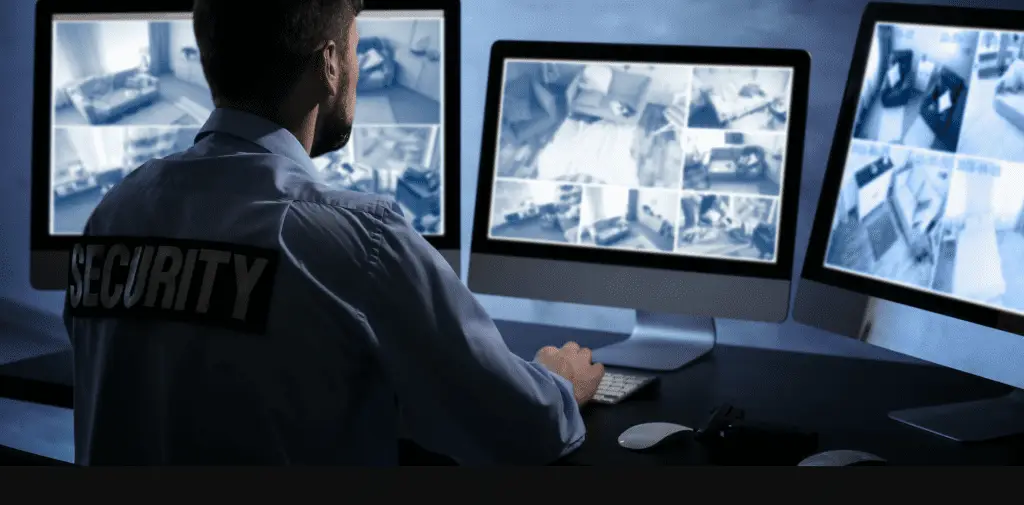In the dynamic world of retail, where customer satisfaction, employee well-being, and net profit are paramount, the role of video security has become indispensable. The ever-evolving landscape of security challenges demands robust solutions, and video surveillance systems stand as stalwart guardians. Retail establishments, whether small boutiques or sprawling shopping centers, are increasingly relying on video security for the benefit of customers, staff, and the overall business. Let’s take a closer look at why video surveillance has become a cornerstone in modern retail security strategies.
Why Retail Businesses Need Video Surveillance
Safety of Customers and Staff
The general safety of everyone in your retail store is of utmost importance. A video security system acts as a proactive deterrent to potential threats, creating a secure environment for both patrons and employees. This not only fosters a sense of safety but also boosts the overall shopping experience, encouraging repeat business.
Theft Prevention
Securing your physical space and merchandise is a primary concern for retail businesses, and retail loss prevention is a growing topic in the security space. A proper security camera system provides a constant watchful eye, deterring theft, vandalism, and unauthorized access. This not only safeguards the valuable assets of the business but also minimizes losses due to customer or employee theft, a significant concern for retail stores.
Benefits of a Cloud-Based Retail Security System
Cost Effective
Contrary to common misconceptions, implementing a video surveillance system is a cost-effective investment. The initial setup cost is often outweighed by the long-term benefits, including reduced theft, improved productivity, and potential insurance premium reductions. The return on investment becomes evident as businesses experience enhanced security and operational efficiency.
Cutting-Edge Technology
Video security systems have evolved significantly, integrating cutting-edge technologies to provide comprehensive solutions. High-resolution security cameras, artificial intelligence (AI)-driven analytics, and remote monitoring capabilities are among the technological advancements that empower retailers to stay ahead of potential threats and challenges.
Easy to Install
Gone are the days of complex and time-consuming installations. A modern video surveillance system is designed with user-friendly interfaces, making them easy to install and maintain. This ensures minimal disruption to daily operations during the implementation phase, allowing businesses to seamlessly integrate their existing retail store security hardware, such as IP cameras and NVR systems, into our advanced platform.

Integrating with Other Security Measures
Access Control
The synergy between video security systems and access control enhances overall security. Integrating these systems allows for streamlined monitoring and control, ensuring that only authorized individuals have access to sensitive areas. This seamless integration fortifies the layers of security within a retail environment.
Alarms and Intrusion Prevention/Detection
Real-time alarms and intrusion detection add an extra layer of protection. Video security systems equipped with intelligent sensors can trigger alarms and alerts, enabling swift responses to potential security breaches. This proactive approach is instrumental in preventing theft and mitigating risks before they escalate.
Key Features in a Retail Security System
Retailers looking to improve security through video surveillance should focus on a few key features when selecting a vendor, including:
Recording
Continuous recording captures video footage of every moment within the retail space, serving as a comprehensive record for investigative purposes. The ability to review footage aids in identifying and resolving incidents efficiently.
Live Viewing
Real-time monitoring of retail security cameras allow security personnel to respond immediately to suspicious activities, minimizing response time and maximizing the effectiveness of security measures.
Motion Detection
Motion detection features trigger alerts when unusual movement is detected, providing a proactive response to potential threats or suspicious behavior.
Analytics
Advanced video analytics, often powered by AI, offer decision intelligence capabilities. This includes recognizing patterns, identifying trends, and predicting potential security risks based on data analysis.
Night Vision
Low-light or no-light conditions pose a challenge to traditional surveillance. Night vision capabilities ensure continuous monitoring even in the darkest hours, maintaining security around the clock.
People Counting
People counting features provide valuable insights into customer traffic, helping retailers optimize store layouts and enhance the overall shopping experience.
Heat Maps
Heat maps visually represent customer foot traffic patterns, allowing retailers to identify popular areas and optimize product placements for maximum exposure.
The features of video security systems continue to expand, with innovations such as facial recognition, license plate recognition, and cloud-based storage becoming integral components of comprehensive security strategies.
Video security systems come in various architectures, including centralized, decentralized, and cloud-based solutions. Choosing the right architecture depends on the specific needs and scale of the retail establishment. Tailoring security solutions to the unique requirements of different businesses is crucial. From small boutique stores to large shopping centers, video security systems can be customized to provide optimal protection and operational efficiency.
Indispensable Assets
In conclusion, retail video surveillance systems have become indispensable assets for modern establishments, offering a multi-faceted approach to safeguarding customers, staff, and assets. The benefits, features, and diverse security options make these systems adaptable to the unique needs of different businesses. As technology continues to evolve, the role of video security in retail will only become more integral, providing a robust foundation for a secure and thriving business environment.
If you’re interested in learning more about cloud – based video surveillance systems, please check out our Arcules Cloud Surveillance Solutions.
Schedule a free consultation with our experts today and take the first step towards a safer tomorrow.
